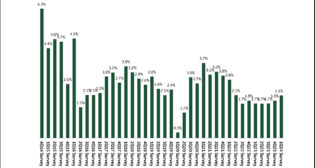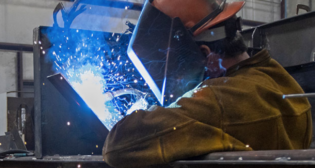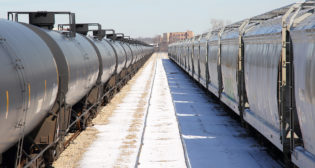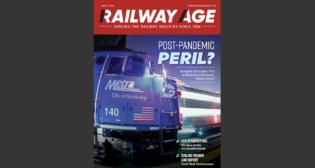
Class I commodity slump a countercyclical short line bonanza
Written by David Thomas, Canadian Contributing Editor
A string of still-shiny, graffiti-free tank cars rests incongruously amid white apple blossoms with Oregon’s glaciered volcano shimmering in the distance.
No, the tank cars are not waiting for the new season’s pressing of apple cider. They are stored here in aptly named Parkdale, earning Iowa Pacific’s Mount Hood Scenic Railroad lucrative daily storage fees, while their owners wait, expensively, for recovery of the energy transportation business.
What has been a calamitous downturn for fleet owners and Class I carriers is becoming a bonanza for short lines with spare sidings, or even, as in the case of Mt. Hood, underutilized main line track. The car storage boom means that Mt. Hood’s summer passenger excursions will turn back to Hood River well short of their usual destination at Parkdale.
“We are in business to make money, and right now, the money is in car storage,” Iowa Pacific CEO Ed Ellis told Railway Age, as the blossoms of April transitioned to the tiny fruit sets of May.
For Iowa Pacific and other short lines with trackage to spare, car storage is a countercyclical boon to the big carriers’ gloom. Ellis estimated that 50,000 coal hoppers and an equal number of tank cars have become temporarily, or permanently, redundant.
“The Class I’s are unhappy they are losing the coal business, and we are unhappy for them; but not so unhappy that we not going to make a few bucks in our unhappiness,” said Ellis.
At daily fees ranging from $3 to $12 depending on car type, Iowa Pacific has 6,000 cars parked in its yards and sidings, with room to double that. Not bad for a sideline business in otherwise hard times.
At the other end of the car storage spectrum, Texas’ TNW Corp. has developed a core business of parking and caring for surplus railcars in dedicated “logistics centers” attached to each of its three Texas short lines. TNW currently has room for 14,000 cars with purpose-built yards, and even loop tracks that can accommodate fully coupled 110-car unit trains.
“For us, it’s not a surge business,” TNW CEO Paul Treangen told Railway Age. “We are a long-term provider of premier railcar storage. We can provide security, we can store loaded or unloaded cars, manage transshipment, and clean and maintain cars.”
TNW’s short line stable, consisting of Texas Northwestern in the northern Panhandle, Texas Rock Crusher Railway at the state’s geographical bull’s-eye, and the southerly Texas, Gonzales & Northern, are ideally situated to benefit from the ebbs and flows of the nation’s petrochemical economy.
In the current ebb, TNW’s storage tracks are filling not only with the expected tank car surplus, but also articulated flat cars configured to haul wind power towers and turbine blades. And, with oilfield services in retreat, brand-new hoppers ordered to carry fracking sand are moving straight from erecting hall to storage track.
With most commodity and special-purpose cars now owned or leased by shippers, and Class I’s slimming trackage to maximize operating ratios, the big carriers have neither the space nor the will to store privately owned cars.
“The Class I’s strive to maintain network velocity and fluidity and prefer not to fill needed sidings with storage of shipper-owned cars,” observed Treangen.
Hopes for market revivals explain why some car owners are paying to keep surplus assets. A bigger factor may be that many cars have years remaining on leases that require they be turned back to lessors in good condition. Consequently, scrapping is not an option and their financers emphatically do not want them back before the due date.
While collapsing demand for crude-by-rail may well spark cutting torches for the oldest, off-lease DOT-111s as they are forced from the rails by federal fiat, a great many newer, near-compliant cars may go to storage rather than to retrofitters, as was anticipated when CBR was booming.
“There are 65,000 DOT-111s mandated to come out of service and most of those cars will be neither rebuilt nor scrapped,” predicted Iowa Pacific’s Ellis. “They won’t be rebuilt because there’s not enough demand for them, and they won’t be scrapped because they are still subject to bank financing. If the bank has leased you the tank car for 10 years, they don’t want it back. I believe well over half of the 65,000 DOT-111s will go into storage.”
Both TNW and Iowa Pacific say they have room for more cars and will lay fresh track if necessary to accommodate even more.
“We have plenty of land we can develop if we need to,” said Treangen. Ellis promises: “If we run out of space, we will build track. It won’t be high-speed track; it will be amusement park track.”
Whether for storage-focused operators like TNW or sideline surge providers like Iowa Pacific, these are the good old days for short lines that can make money from not shifting cars.



